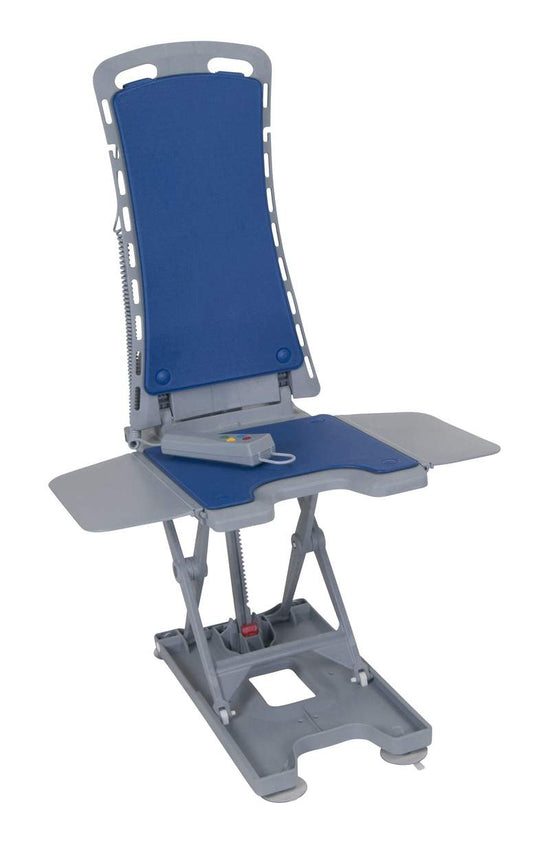Upgrading your hospital bed can significantly enhance comfort and improve overall well-being for those using it at home. Whether you’re recovering from surgery, managing a chronic condition, or simply seeking a more restful sleep environment, the right bed features can make a substantial difference.
This comprehensive guide will walk you through key considerations and options for upgrading your hospital bed. From advanced mattress technologies to adjustable bed frames, we'll explore various enhancements that can provide you with the ultimate comfort and support.
Understanding the Benefits of Upgrading Your Hospital Bed
Upgrading your hospital bed at home can significantly enhance your comfort and overall well-being. Modern hospital beds come with advanced features that offer numerous benefits tailored to meet individual needs, making them a worthwhile investment for those requiring long-term care.
One of the primary advantages is improved comfort. Newer models often include adjustable settings that allow you to modify the bed's height, head, and foot positions with ease. This flexibility can help alleviate pressure points, reduce the risk of bedsores, and improve circulation—critical factors for those spending extended periods in bed.
Enhanced safety features are another compelling reason to consider an upgrade. Contemporary hospital beds are equipped with side rails, lockable wheels, and emergency power backup systems, ensuring the user's safety and reducing the likelihood of falls or accidents. These features provide peace of mind not only to the user but also to caregivers.
Additionally, upgraded hospital beds offer better ergonomics, facilitating easier transfers in and out of bed. Features like lift-assist mechanisms and one-touch controls simplify movements, promoting independence and reducing strain on both the user and caregivers.
Modern hospital beds often come with integrated technology, such as built-in massagers and USB ports for device charging, adding convenience and enhancing the overall living experience.
Key Features to Look for in a Hospital Bed
Upgrading your hospital bed for ultimate comfort involves understanding the key features that can significantly enhance functionality and user experience. When selecting a hospital bed for home use, consider the following essential features:
- Adjustability: Look for beds with multiple adjustment options, including head, foot, and height adjustments. This flexibility allows for optimal positioning for comfort, medical needs, and ease of caregiving.
- Mattress Type: Choose a mattress designed specifically for hospital beds, such as foam, air, or alternating pressure mattresses. These types help prevent pressure ulcers and provide better support.
- Safety Features: Ensure the bed includes safety rails that are easy to adjust and lock securely. These rails prevent falls and provide additional support when getting in and out of bed.
- Ease of Use: Opt for a bed with an intuitive control panel or remote control, allowing users and caregivers to make adjustments effortlessly. Electric beds are typically more convenient than manual ones.
- Weight Capacity: Verify the bed's weight capacity to ensure it can accommodate the user safely. Bariatric beds are available for individuals who require higher weight limits.
- Mobility: Consider beds with lockable wheels for easy mobility and stability. This feature allows the bed to be repositioned easily within the room or moved for cleaning purposes.
- Durability: Invest in a hospital bed made from high-quality materials that can withstand daily use. Steel frames are generally more durable than aluminum or plastic.
-
Aesthetics: While functionality is paramount, the appearance of the bed can also impact the comfort of the living space. Some hospital beds come with wood finishes or customizable panels to blend seamlessly with home décor.
By focusing on these key features, you can upgrade to a hospital bed that offers enhanced comfort, safety, and convenience, making home care more effective and pleasant. For expert advice and top-quality options, consult with Everything Medical to find the perfect hospital bed tailored to your needs.
Adjustable Bed Frames: Enhancing Comfort and Support
When upgrading your hospital bed for ultimate comfort, an adjustable bed frame is a crucial component to consider. These frames offer numerous benefits for home users, enhancing both comfort and support through their versatile features. Here are the key aspects to look for:
- Head and Foot Elevation: Adjustable bed frames allow users to raise and lower the head and foot sections independently. This flexibility can help alleviate conditions such as acid reflux, sleep apnea, and swelling in the legs, while also providing optimal positioning for reading or watching TV.
- Height Adjustability: The ability to adjust the overall height of the bed makes it easier for users to get in and out of bed and simplifies caregiving tasks. Lowering the bed can increase safety, especially for those prone to falls, while raising it can aid in medical procedures and personal care.
- Zero Gravity Position: Some adjustable bed frames offer a zero gravity position, which simulates weightlessness by elevating both the head and legs slightly above the heart level. This position can reduce pressure on the spine, improve circulation, and enhance overall relaxation.
- Massage Functions: High-end adjustable frames often come with built-in massage features, providing gentle vibrations that can help soothe sore muscles and promote better sleep. Look for models with customizable intensity settings for a personalized experience.
- User-Friendly Controls: Advanced adjustable bed frames include wireless remotes or smartphone apps for easy operation. Features like programmable positions allow users to save their preferred settings and achieve optimal comfort with a single button press.
- Sturdy Construction: Ensure the frame is constructed from durable materials like steel or reinforced aluminum, which can support higher weight capacities and ensure long-term stability.
- Silent Operation: Look for bed frames with quiet motors to avoid disturbances during adjustments. This feature is particularly important for those who share their living space.
- Aesthetics: Modern adjustable bed frames come in various styles and finishes, allowing you to maintain a cohesive look with your home décor while enjoying enhanced functionality.
By incorporating an adjustable bed frame into your hospital bed setup, you can significantly improve comfort, support, and overall well-being. For expert guidance and a wide selection of high-quality adjustable bed frames, explore the offerings at Everything Medical. They can help you find the perfect solution tailored to your specific needs.
Improving Mobility with Hospital Bed Accessories
Upgrading your hospital bed with the right accessories can significantly enhance mobility and overall comfort for home users. These accessories are designed to provide support, improve safety, and facilitate easier movement, making daily activities more manageable. Here are some key accessories to consider:
- Overbed Tables: Overbed tables provide a stable surface that can be easily positioned over the bed. They are perfect for eating, reading, or using a laptop, allowing users to perform these activities comfortably while staying in bed.
- Trapeze Bars: Trapeze bars are mounted above the bed and assist users in repositioning themselves or transferring in and out of bed. They provide a secure handhold, reducing the strain on caregivers and promoting user independence.
- Bed Rails: Bed rails offer additional safety by preventing falls and providing a support structure for users to hold onto when shifting positions. Some models are adjustable and can be lowered or removed as needed.
- Leg and Foot Elevators: Elevators help maintain proper leg and foot positioning, reducing swelling and improving circulation. They can be particularly beneficial for individuals with circulation issues or those recovering from surgery.
- Transfer Boards: Transfer boards bridge the gap between the bed and a wheelchair or another surface, facilitating safe and easy transfers. They reduce the physical effort required by both the user and the caregiver.
- Mattress Pads and Overlays: Specialized mattress pads and overlays, such as gel or foam ones, can enhance comfort and support. They help distribute weight evenly, reducing pressure points and the risk of bedsores.
- Bedside Caddies and Organizers: These accessories keep essential items within reach, reducing the need for users to stretch or move excessively. They can hold medications, remote controls, books, and personal items.
- Lift Systems: Ceiling or floor-mounted lift systems can greatly aid in moving users from the bed to a wheelchair or another location. These systems are designed to support a person's weight safely and securely.
- Wheelchair Ramps: Portable wheelchair ramps can be used to overcome small steps or thresholds, enhancing mobility within the home environment.
By investing in these hospital bed accessories, you can create a safer and more comfortable living space that supports improved mobility and independence. For a comprehensive range of high-quality hospital bed accessories, consult Everything Medical. Their expert team can help you select the best products tailored to your specific needs.
Choosing the Right Hospital Bed for Your Needs
Selecting the right hospital bed for home use is crucial for ensuring comfort, safety, and effective care. With various options available, understanding your specific needs can help you make the best choice. Here are key considerations and a breakdown of the main types of hospital beds:
Key Considerations
- User's Health Condition: Evaluate the user's medical requirements, such as mobility limitations, pressure sore risk, or the need for frequent position adjustments. This will guide you in selecting features like adjustability and mattress type.
- Caregiver’s Role: If a caregiver assists the user, choose a bed that facilitates their tasks with easy-to-use controls and adjustable height.
- Space Availability: Ensure the bed fits comfortably within the room while providing enough space for movement and medical equipment.
- Budget: Consider your budget, including the cost of the bed, mattress, and any necessary accessories.
Types of Hospital Beds
- Bariatric Hospital Beds: Bariatric hospital beds are designed to support higher weight capacities, typically up to 1,000 pounds. They are wider and sturdier than standard beds, providing enhanced stability and comfort for heavier individuals.
- Features: Reinforced frames, robust motors for electric adjustments, and wider sleeping surfaces are common features. Some models also include integrated scales for convenient weight monitoring.
- Best For: Individuals who require a more durable bed due to higher weight or those who need additional space for comfort.
- Full Electric Hospital Beds: Full electric hospital beds offer maximum convenience with electric controls for adjusting the head, foot, and bed height. These adjustments can be made effortlessly with a remote control or panel, enhancing both user and caregiver ease.
- Features: These beds come with multiple positioning options, quiet motors, and safety features such as lockable wheels and side rails.
- Best For: Users who need frequent and varied position adjustments for comfort or medical reasons, and those who prefer the ease of electric controls.
- Low Hospital Beds: Low hospital beds are designed to minimize the distance between the bed and the floor, reducing the risk of injury from falls. These beds are particularly useful for users prone to falling out of bed.
- Features: Height adjustability allows the bed to be lowered close to the floor when sleeping and raised when needed for caregiving tasks. Some models also include side rails for added safety.
- Best For: Users with a high fall risk or those who have difficulty getting in and out of higher beds.




